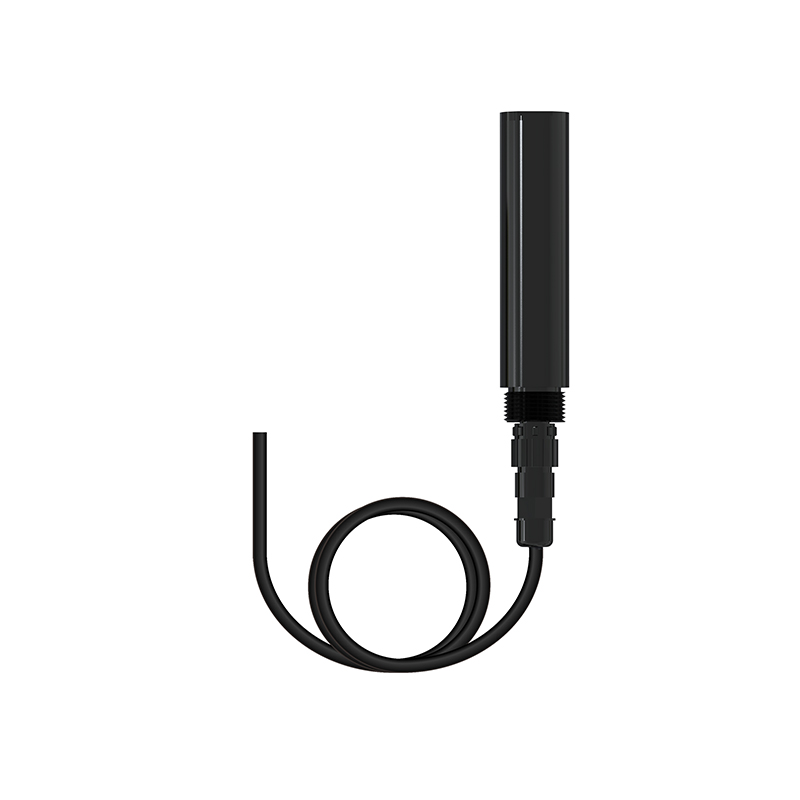Meteorological environment monitoring equipment supplier
Insist on doing high-precision customer favorite technology products

1. Definition of chlorophyll in water for water quality chlorophyll transmitter
Chlorophyll is an important component required by plants for photosynthesis. For water quality testing, chlorophyll is mainly derived from algae (blue-green algae and green algae) in the water body. The level of chlorophyll represents the concentration of algae in the water body and to a certain extent. It can reflect the water quality of the water area. If the chlorophyll content of the water area is too high, it may indicate eutrophication of the water body, which will eventually produce algae blooms or red tides, which will lead to a decline in the water quality of the water area. The concentration of chlorophyll in water reflects the quality of water to a certain extent.
2. Product features of water quality chlorophyll transmitter
1. This product is a device for measuring the chlorophyll concentration in water. It adopts the principle of fluorescence and uses the design method of optical fiber transmission light path. The device outputs relative fluorescence units to facilitate analysis of the relationship between fluorescence intensity and chlorophyll concentration based on actual conditions.
2. Added internal light filtering algorithm, strong ability to resist external light interference.
3. Built-in temperature transmitter can automatically compensate for temperature.
4. Can be used for research, investigation and detection of rivers, lakes, ponds, marine surveys, aquaculture, drinking water sources, algae and phytoplankton conditions.
3. Technical parameters of water quality chlorophyll transmitter
Measurement elements: chlorophyll concentration value, water temperature, RFU value
Electrode size: length 134mm, outer diameter 30mm
Electrical interface: The thread is 3/4 thread, easy to install
Protection level: IP68
Electrode life: The electrode life cycle is about 1 year
Electrode maintenance: The equipment itself generally does not require routine maintenance
Electrode Calibration: Calibration using Rhodamine B standard solution is only an approximation. To ensure accurate readings, the fluorescence readings obtained in the field must be correlated with the results obtained from the extraction analysis of the above samples. We used Rhodamine B (Item#R104960) purchased from Aladdin Company. Rhodamine B is listed as a possible carcinogen/mutation-inducing substance, and gloves must be worn during operation.
Working temperature: 0~40℃
Response time: ≤30sec
Shell material: corrosion-resistant plastic
Communication interface: RS485
Measuring range: 0~400ug/L; 0~100RFU
Measurement error: ±5%FS (25℃); ±0.5℃
Resolution: chlorophyll: 0.1ug/L, 0.1RFU; temperature: 0.1℃
Chlorophyll knowledge
1. Chlorophyll in water comes from free green algae and cyanobacteria in the water. Among them, green algae contain chlorophyll a and chlorophyll b, while cyanobacteria only have chlorophyll a, so the essence of measuring chlorophyll is to measure the concentration of chlorophyll a.
2. According to the ecological environment standard HJ 897-2017, the measurement of chlorophyll a using spectrophotometry is relatively accurate, but the operation is complicated and requires many reagents and instruments. For example, acetone is needed to extract chlorophyll, and a centrifuge is required for solution stratification. , a spectrophotometer is required for absorbance measurement, and real-time measurement is not possible. This product uses the fluorescence method, which utilizes the fluorescence properties of chlorophyll a. After being excited by light of a specific wavelength, it will produce fluorescence of a fixed wavelength. The concentration of chlorophyll a can be calculated based on the fluorescence intensity. Compared with spectrophotometry, fluorescence method has obvious advantages of convenience, is suitable for online real-time measurement, and has low measurement cost. The disadvantage is that the accuracy is not as good as that of spectrophotometry, and it is subject to many interference items.
3. There is no unified standard for judging the eutrophication of water bodies. The currently generally adopted standards are: the nitrogen content in the water exceeds 0.2-0.33ppm, the phosphorus content exceeds 0.01-0.02ppm, the biochemical oxygen demand exceeds 10ppm, and the total number of bacteria in fresh water with a pH value of 7-9 exceeds 100,000 per milliliter. The chlorophyll a content that characterizes the number of algae is greater than 10 mg/L.
4. Precautions for installing water quality chlorophyll transmitter
1. When installing the transmitter, water level changes should be taken into consideration to ensure that the device is below 10cm of water level, and it needs to be installed in an area with slow water flow and no bubbles.
2. The transmitter should be installed 5cm away from the surrounding walls, and there should be no obstacles within 7cm below the device.
5. Precautions for using water quality chlorophyll transmitter
1. The equipment contains sensitive optical components and electronic components. Ensure that the equipment is not subject to severe mechanical impact and avoid direct application of any mechanical stress to the equipment during use.
2. When installing the equipment, try to avoid the cables being too tight or stressed, and avoid the equipment being exposed to sunlight.
3. Please do not touch the measurement window with your hands to avoid damage to the measurement window.
4. When measuring and calibrating equipment, avoid air bubbles adhering to the surface of the equipment, especially the measurement window. Regularly check the measurement window for attachments and scaling. It is recommended to clean it with tap water every 30 days and wipe it with a moist soft cloth. Do not scratch it. Measurement window, if the measurement value is too high, too low, or the value continues to be unstable, please check whether the measurement window of the transmitter is clean.
5. In principle, the equipment should be calibrated before each use. It is recommended to calibrate it every 3 months for long-term use. The calibration frequency should be appropriately adjusted according to different application conditions (the degree of dirtiness of the application site, the deposition of chemical substances, etc.).